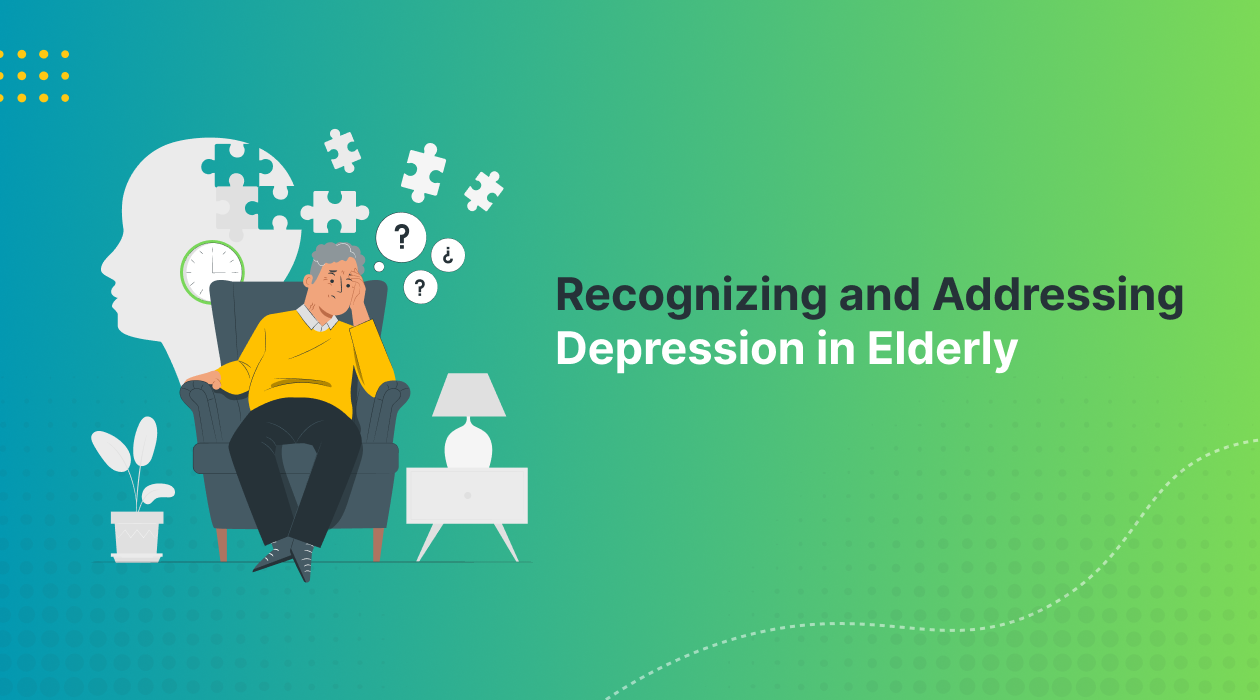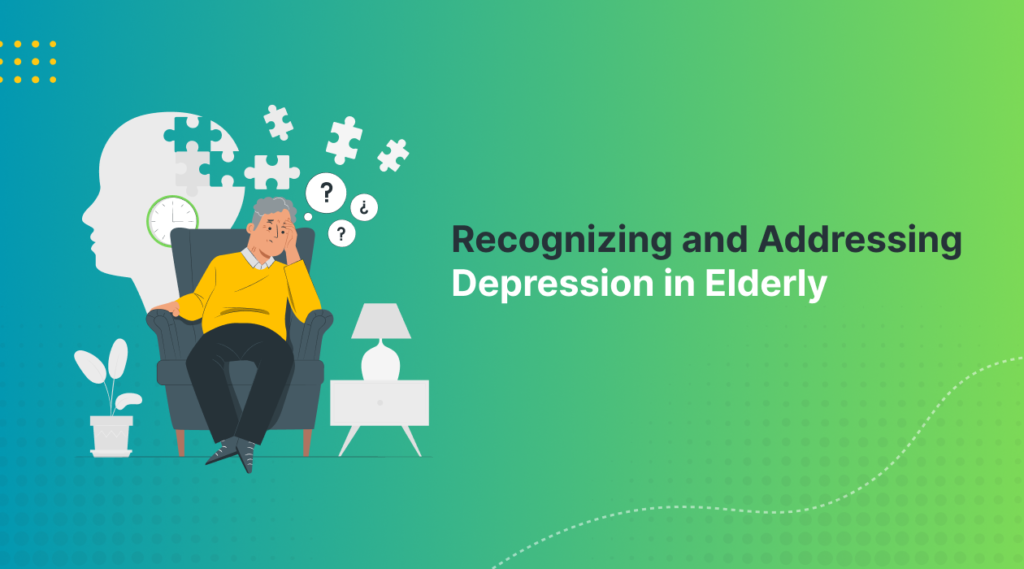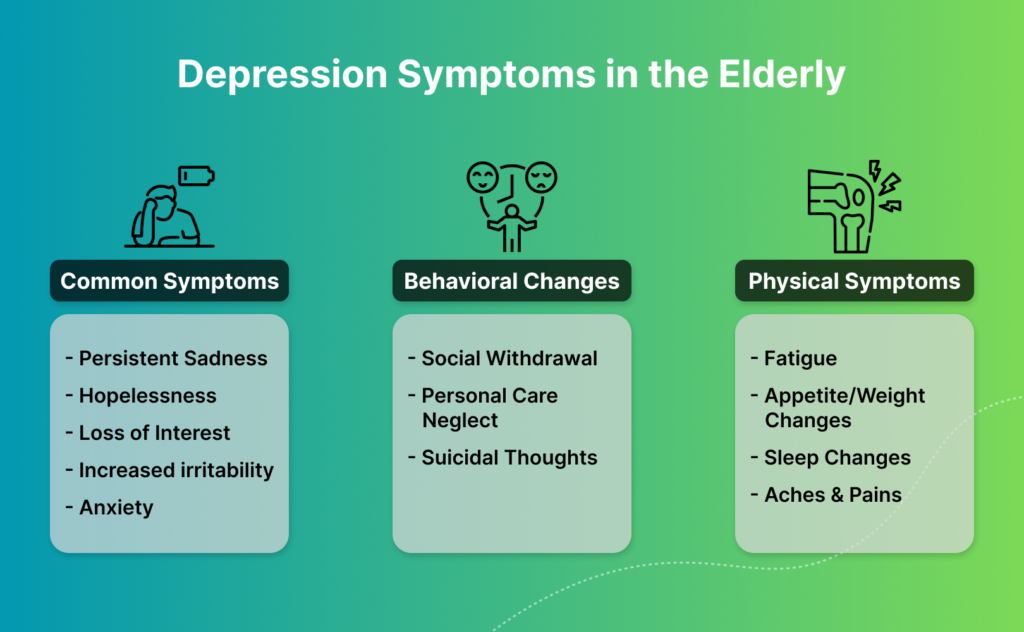

Depression, a term that transcends age and culture, is a mental health condition that affects millions of people worldwide. While it can impact individuals of all ages, our focus today lies on one particularly vulnerable group: the elderly. Depression in the elderly, often referred to as late-life or geriatric depression, is a complex and often underdiagnosed mental health challenge that deserves our attention.
According to WHO, about 14% of older adults above the age of 60 experience some kind of mental disorder. As we commemorate World Mental Health Day on October 10, it is essential to shine a light on the specific issues faced by the elderly population when it comes to mental health, especially depression.
Depression in the elderly often goes unnoticed, and this lack of recognition and intervention can lead to a vicious cycle of deterioration in their mental and physical health. As we delve into this blog, we will explore the prevalence, signs, causes, and consequences of depression in the elderly, as well as strategies to recognize and address this issue effectively.
Recognizing Depression in the Elderly
Depression in elderly individuals often manifests differently than it does in younger age groups. This can make it challenging to identify, but it’s crucial to recognize the signs and symptoms early on to provide the necessary support and treatment. In this section, we will delve into the common signs and symptoms of depression in the elderly, the difficulties in identifying it, and the essential role that family and caregivers play in this process.

Common Signs and Symptoms
1. Emotional Indicators
A range of emotional indicators can characterize depression in the elderly. These may include:
- Persistent sadness or a low mood: One of the most common emotional signs, elderly individuals with depression may exhibit a deep and persistent sense of despair.
- Feelings of hopelessness and helplessness: They might express a sense of despair and an inability to see a brighter future.
- Loss of interest or pleasure: Elderly individuals may lose interest in activities they once enjoyed, withdrawing from social engagements and hobbies.
- Increased irritability: While depression often brings sadness, it can also lead to heightened irritability, which may be expressed as frustration or anger.
- Anxiety: Anxiety often accompanies depression, causing worry, restlessness, and even physical symptoms like muscle tension.
2. Physical Symptoms
Depression doesn’t just affect the mind; it can also manifest through physical symptoms in the elderly. Look out for:
- Fatigue: A persistent lack of energy and excessive tiredness.
- Changes in appetite or weight: This may result in significant weight loss or gain.
- Sleep disturbances: Elderly individuals may struggle with insomnia or experience excessive sleepiness.
- Aches and pains: Unexplained physical complaints or chronic pain can be linked to depression.
3. Behavioral Changes
Depression often leads to noticeable changes in behavior. Keep an eye out for:
- Social withdrawal: A reluctance to engage in social activities and a tendency to isolate oneself from friends and family.
- Neglect of personal care: Depression can lead to a decline in self-care, such as poor hygiene or neglecting medications.
- Suicidal thoughts: In severe cases, depression may lead to thoughts of self-harm or suicide. If you notice such signs, it is essential to seek professional help immediately.
Challenges in Identifying Depression in the Elderly
Identifying depression in the elderly can be challenging due to several factors:
- Stigma and generational attitudes: Older generations may view mental health issues as a sign of weakness, making it less likely for them to acknowledge their own struggles or seek help.
- Comorbidity: Depression often occurs alongside other medical conditions, which can mask or complicate its diagnosis.
- Communication barriers: Elderly individuals may have difficulty expressing their emotions or symptoms, making it essential for caregivers to be observant.
The Role of Family and Caregivers in Recognizing Depression
Family members and caregivers play a crucial role in recognizing depression in the elderly. They are often the ones who spend the most time with the elderly individual and can provide valuable insights. Here are some steps they can take:
- Open communication: Encourage open and non-judgmental communication with the elderly person to understand their emotional state better.
- Monitor changes: Keep a close eye on emotional, physical, and behavioral changes and be alert to any signs of depression.
- Seek professional help: If you suspect depression, it’s essential to consult a healthcare professional who can provide a thorough evaluation and recommend appropriate treatment options.
Recognizing depression in the elderly is the first step toward helping them regain their mental and emotional well-being.
Addressing Depression in the Elderly
Now that we’ve discussed how to recognize depression in the elderly, it’s crucial to explore the various ways to address this condition and provide the support and care necessary for their well-being. Managing depression often involves a combination of medical and non-medical interventions. In this section, we will examine the different strategies for addressing depression in the elderly.
Medical Interventions
1. Medication Options
Medication can be a crucial component of treating depression in the elderly. However, it’s essential that a healthcare professional carefully determines the choice of medication and dosage. Common types of medications used to treat depression include:
- Antidepressants: These medications work to balance certain chemicals in the brain, helping to alleviate the symptoms of depression. Specific types, such as Selective Serotonin Reuptake Inhibitors (SSRIs), are often prescribed.
- Atypical Antidepressants: These are alternatives to traditional antidepressants and can be considered for elderly individuals who do not respond well to standard medications.
It’s important to note that medication should be prescribed and monitored by a healthcare provider, as the elderly may be more vulnerable to side effects and interactions with other medications they are taking.
2. Psychotherapy and Counseling
Psychotherapy, also known as talk therapy, can be highly effective in treating depression in the elderly. Therapists and counselors can help them address the underlying causes of their depression and develop coping strategies. Different forms of psychotherapy include:
- Cognitive Behavioral Therapy (CBT): This type of therapy focuses on identifying and changing negative thought patterns and behaviors that contribute to depression.
- Interpersonal Therapy (IPT): IPT helps individuals improve their interpersonal relationships and communication skills, which can be particularly beneficial for elderly individuals facing isolation.
- Supportive Counseling: A supportive and empathetic counselor can provide a safe space for the elderly to express their emotions and concerns.
Non-Medical Interventions
Non-medical interventions are essential components of addressing depression in the elderly, often complementing medical treatments and promoting overall well-being.
1. Lifestyle Changes
- Healthy Diet: Encourage a balanced diet rich in fruits, vegetables, and whole grains. Nutritional deficiencies can exacerbate depressive symptoms.
- Regular Exercise: Physical activity has been shown to improve mood and reduce symptoms of depression. Simple exercises like walking, swimming, or yoga can have a positive impact.
- Adequate Sleep: Ensure the elderly get enough restorative sleep as sleep disturbances can worsen depression.
2. Social Support and Community Involvement
- Encourage Social Activities: Engaging in social interactions can combat loneliness and provide emotional support. Encourage participation in group activities, clubs, or volunteering.
- Maintain Family Connections: Strengthening family bonds and maintaining regular contact with loved ones can significantly improve an elderly person’s emotional state.
3. Physical Activity and Nutrition
- Stay Physically Active: Regular physical activity can improve mood and overall health. Encourage the elderly to engage in activities appropriate for their age and physical condition.
- Balanced Nutrition: A well-balanced diet not only supports physical health but also impacts mental well-being. Nutrient-rich foods can help alleviate symptoms of depression.
Complementary and Alternative Therapies
While these should be used with caution and under the guidance of a healthcare professional, some complementary and alternative therapies may offer additional support:
- Art and Music Therapy: These creative therapies can provide emotional expression and relief.
- Mindfulness and Meditation: These practices can help reduce stress and promote a sense of calm.
- Acupuncture and Massage: Some individuals find these therapies soothing and beneficial in managing depressive symptoms.
Recognizing depression in the elderly is the first step toward providing the support they need. Identifying the emotional, physical, and behavioral signs can be a formidable task, but the attentive eyes of caregivers and family members play a crucial role in this process.
Once depression is recognized, addressing it requires a multi-faceted approach. Medical interventions, including medication and psychotherapy, can be vital in alleviating the symptoms. However, non-medical interventions, such as lifestyle changes, social support, and physical activity, are equally significant. These interventions not only target the symptoms but also promote overall well-being, which is especially important for the elderly.
Furthermore, complementary and alternative therapies, when used judiciously, can complement traditional treatments and offer additional avenues for relief.

